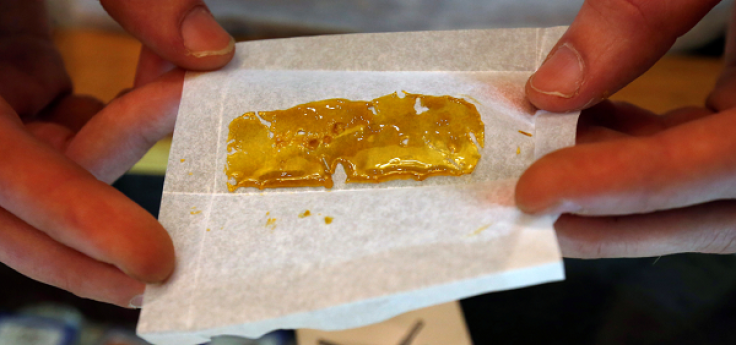What Is Dabbing? Highly Potent Marijuana Trend Is Much Older Than Latest Dance Craze

House Speaker Paul Ryan let the nation know that he was, in fact, well aware what dabbing was during his town hall interview with CNN Thursday. The 46-year-old even demonstrated the popular dance move and referenced NFL star Cam Newton's particular style of dabbing.
But in cannabis culture, a dab is an incredibly potent concentrate made from marijuana’s main psychoactive ingredient tetrahydrocannabinol or THC. The smoking style dates back to the 1970s, years before Atlanta rappers burst on the scene with the dance move with the same name.
Sometimes called honey oil, budder, shatter, wax, honeycomb or butane hash oil, dabs are mostly made by heating marijuana soaked solvents like butane or carbon dioxide, resulting in its sticky brownish-green candle-wax like texture. Smoking a dab through a modified bong or water pipe leads to an instant and powerful high, giving users an experience similar to their first time smoking marijuana.
Paul Ryan Hit The Dab. The Internet Hit The Vomit. https://t.co/ccBrC7sGtH
— Bossip (@Bossip) January 13, 2017
“At minimum, dabs are four times as strong as a joint, and the high is administered all at once,” John Stogner, an assistant professor of criminology at the University of North Carolina, told Live Science. Stogner, who studies emerging drug trends, co-authored a paper, which was published in the journal of Pediatrics in June 2015, highlighting the stoner trend.
Although dabbing is said to be a great pain reliever for people suffering from severe or chronic pain due to its instantly-felt effects, it is still considered a rather dangerous method of enjoying marijuana simply due to the process in which it’s created.
Eclipse Farm-Ecology Blue Dream #Marijuana Wax Extract Review https://t.co/XmkEyECYe6 #sativa #cbd #ganja pic.twitter.com/jTDiCBd3jx
— #The420Wire (@the420wire) January 13, 2017
After pouring butane gas over marijuana, which extracts the THC, the plant is touched to evaporate the butane, leaving only the thick concentrate remains. While industry professionals creating dabs for legal purposes have the proper equipment and often create dabs through closed-extraction methods, home-made dabs created by amateurs have resulted in severe explosions. In Colorado, following full recreational legalization of marijuana in 2014, butane gas explosions spiked nearly 50 percent compared to the number of gas explosions the state saw the year before.
There is concern that marijuana dabbing could be more harmful to human health than the standard way of smoking it, and there are fears among the research community that dabs could lead to the first instance of overdose from marijuana, due to its 95-percent THC concentration. Not to mention the other chemicals people could ingest when dabbing, like gasses released when lighting a metal or glass bong from rusting or excess solder.
Testing fragrances for wax melts. This one sounds intriguing. 😄 ✌ #pot #marijuana #maryjane https://t.co/pUxc9ZzwSO pic.twitter.com/AqTqZf8VkA
— Katie Adams (@thumbprintsoap) December 29, 2016
Although there haven’t been many studies performed or published on dabs as of yet, Stogner said, “it’s dangerous to assume the risks of dabbing are akin to those of smoking marijuana.”
© Copyright IBTimes 2024. All rights reserved.












